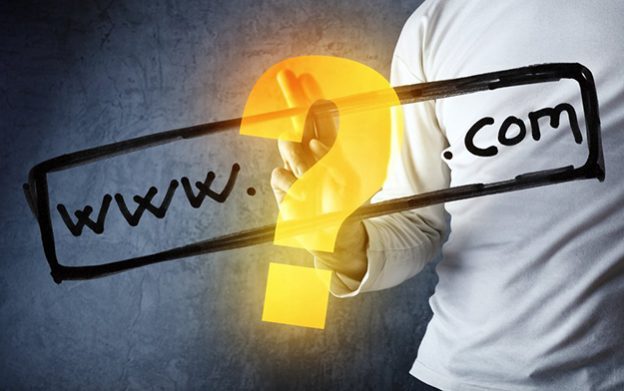Help! Someone Else Owns My Domain Name

At Dmac Media, we have always stressed the importance of the seemingly humble domain name. Humble, because its cost is minimal and its true functions are often hidden. That is, until you run into problems with ownership and renewals. Your domain primarily directs traffic to your website, but it is also your brand name on the internet. As such, it’s one of your business assets and should be controlled by someone in authority in your organisation. Sometimes this is not the case. Sometimes, for one reason or another your domain may be administered by someone who has scant or no connection to your company.
“If you are not the administrator on your own domain name it may cause issues”
Perhaps the name was registered years ago by an IT company, by your first web-designer or an employee who has left. Perhaps you inherited the domain name when you acquired the business. This is more common than you may think. No matter what reason, if you are not the administrator on your own domain it may cause issues in the future, particularly if you wish to sell your business or you attempt to transfer from the billing/registrar company. If your domain name is administered by someone other than you or your company then you need to take steps to get it into your own name. This should be treated quite seriously, if you do not administer the domain, you may not get the annual billing and for the sake of a few euro, your website can be offline, losing you search engine ranking and valuable business
How to Check “Who is” the Administrator of Your Domain
Since GDPR came into effect it is not so easy to learn who actually owns your domain. What you can do is copy the domain address into https://www.whois.com/
This will give you some valuable information on the name.
The domain owner is called the “Registrant” and the company which administers the renewals etc for the domain is called the ‘Registrar’. In the past, before data protection was enforced, the name of the registrant was displayed. If it was your own, or your companies, all was well in the world. Now, it is a bit of guess work. Note the Registrars name (This will be Blacknight, GoDaddy or a myriad of other companies) and check your emails to see if you have received any messages regarding your domain name. If you have correspondence addressed to you, then you will be able to call and ensure that all the details on the domain name are correct. If there is nothing, then you should check next for billing.
“We administer over 800 emails on behalf of our clients”
Domain names must be renewed every year and someone is getting an invoice for this amount (unless it has been purchased for years in advance!). The invoice will enlighten you as to who has access to the domain name details. For example, in Dmac Media we administer over 800 emails on behalf of our clients. We then can assist in gaining access and confirming ownership and pertinent details on the domain address. If none of this detective work thus far confirms your ownership of the domain, then contact the Registrar giving details of your right to the name (companies registered number, VAT number etc.) as they all have a resolution process whereby the name may be reclaimed and or the details changed.
It is worth noting that ICANN (The Internet Corporation for Assigned Names and Numbers), a non profit organisation is charged with the task of ensuring that all of our valuable domain names are with the correct organisations and people. Each year they send out ‘verification notices’ to domain holders, where they may change the details of the administrators, addresses etc. Of course, if you are not the administrator on your domain name, this is of little use to you. ICANN can, and do, suspend names that do not verify the registered details in a direct effort to combat cyber squatting.
What if another individual or company owns my domain name?
This is something that usually happens in error. A non-reputable tech company or obliging friend or relative may have been working on your original website purchase and design, and purchased the domain name using their own details. The steps described above whereby the Registrar is contacted to change the details, is usually simple and easily resolved. Probably because it happens so often! There are other more sinister cases, where another individual or a rival has purchased the pertinent domain name for your business for nefarious purposes. Either to prevent your business from thriving or to extract money by selling you the name. If the domain name you feel entitled to is in the hands of others, you can go through the Registrar for that domain to prove your entitlement.
This is much easier to do when it is a .ie domain name. It is worth noting that when purchasing a .ie domain name, the potential owner must prove residency in Ireland and or their entitlement to the name. This is to prevent ‘shark companies’ from buying up choice names and trying to resell them to business owners. This is of course, very helpful if your domain name, the name clearly relevant to your business or name, is being administered by someone other than you. IEDR can deem the domain name to be yours if you can prove your entitlement. Likewise, with a Companies Office Number, Headed notepaper, Vat number etc, you can claim the name back.
Purchasing domain names carefully
Yes, we appreciate how annoying it is to weigh in with advice when clearly you are reading this having fallen foul of Registration issues. However, we would be remiss if we did not say that there must be caution and clarity when purchasing a domain name. Employees names should not be administrators and senior management is the preferred option. I.T. companies that are inexperienced or unused to the issues that can arise should be supervised to ensure that the right administrator looks after the domain name. If you have issues and are an existing Dmac Media client, we can offer support and assistance if your domain name has historically, not been properly registered. The Registrar is the best place for anyone else attempting to reclaim dominion over their domain name.


 How To Add A Page to Your Dmac Media Website
How To Add A Page to Your Dmac Media Website Social Media Stories for Business Profiles
Social Media Stories for Business Profiles Facebook Advertising Jargon Buster
Facebook Advertising Jargon Buster